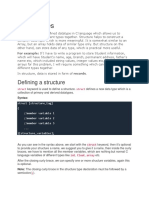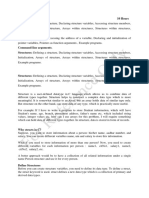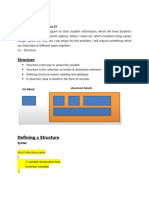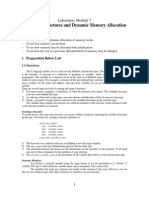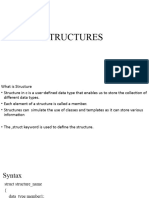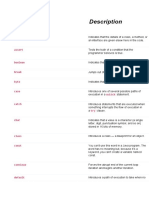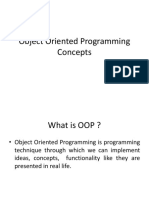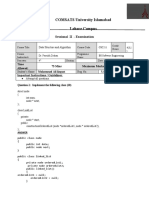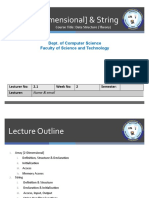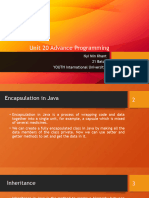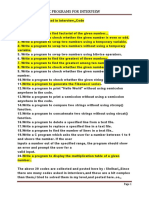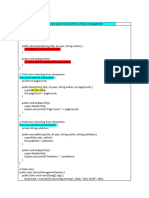0% found this document useful (0 votes)
22 views12 pagesStructures in C
The document provides an overview of structures in C, detailing their definition, creation, and basic operations. It explains how to define structures, access their members, initialize them, and pass them to functions, as well as the use of typedef for creating aliases. Additionally, it discusses the concept of arrays of structures for storing multiple entities of the same type.
Uploaded by
daniruddha003Copyright
© © All Rights Reserved
We take content rights seriously. If you suspect this is your content, claim it here.
Available Formats
Download as PDF, TXT or read online on Scribd
0% found this document useful (0 votes)
22 views12 pagesStructures in C
The document provides an overview of structures in C, detailing their definition, creation, and basic operations. It explains how to define structures, access their members, initialize them, and pass them to functions, as well as the use of typedef for creating aliases. Additionally, it discusses the concept of arrays of structures for storing multiple entities of the same type.
Uploaded by
daniruddha003Copyright
© © All Rights Reserved
We take content rights seriously. If you suspect this is your content, claim it here.
Available Formats
Download as PDF, TXT or read online on Scribd
/ 12






